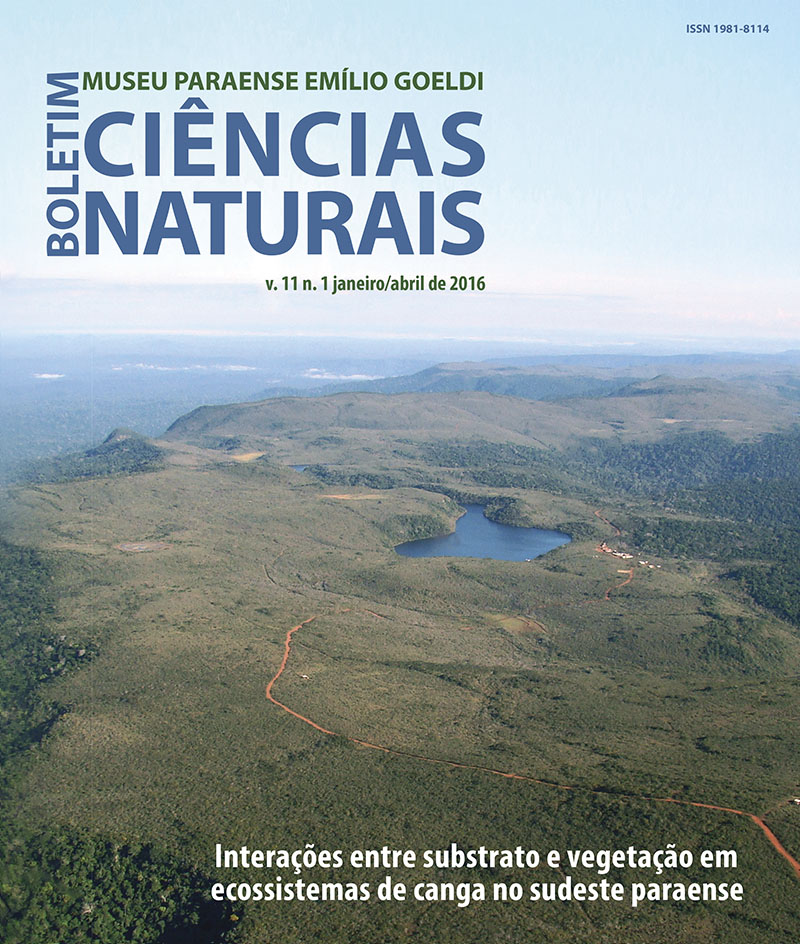One thousand years of archaeological occupations with dark earth spots in a forest of Carajás Region, Pará, Brazil
DOI:
https://doi.org/10.46357/bcnaturais.v11i1.457Keywords:
Archaeological dark earth, Archaeology of the Amazon, FLONATA, ADE spots, Geoarqueologia, CarajásAbstract
The Amazon region was occupied by a wide diversity of peoples and cultures, in a long and dynamic development path. Was marked by adaptation to the availability of natural resources and environmental management, like the archaeological dark earth (ADE). These soils have dark color, high levels of P, Ca, Mg, Zn and Mn, associated with ceramic artifacts, lithics, fauna and flora remains. The research was conducted at sites Bitoca 1 and Bitoca 2, located in the area of Tapirapé-Aquiri National Forest (FLONATA), the municipality of Marabá, Pará. These sites consist of small patches of ADE which were correlated to housing areas (huts and vicinity). These areas were occupied by period of about 1,200 years and may or may not have been inhabited simultaneously. Observations made during the excavations, together the different dating and to changes in P, Ca, Mg, Zn and Mn, both within and between patches, suggest areas with successive occupations, and/or re-occupation, with different activities related to type and intensity of organic materials (animal or vegetable) or inorganic (ceramic fragments) disposed and/or space-time use.
Downloads
Published
Issue
Section
License
Publication means fully assigning and transferring all copyrights of the manuscript to the journal. The Liability Statement and
Assignment of Copyrights will be enclosed with the notice of acceptance. All the authors must sign the document and return it to the journal.








